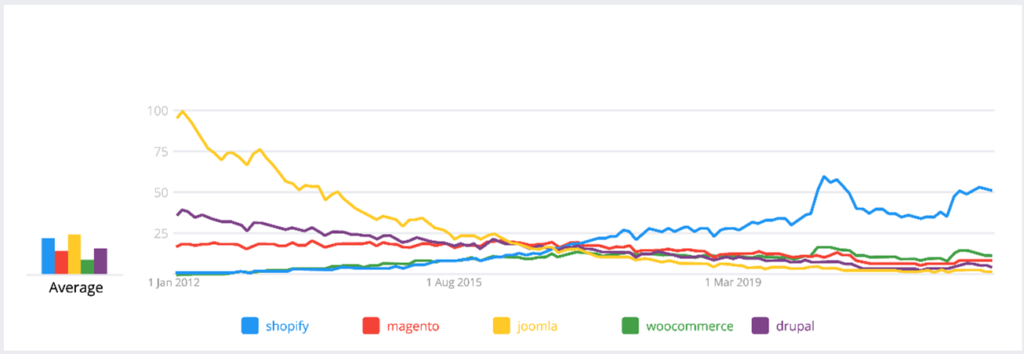
30-second summary:
- Reducing reliance on canonical tags can improve product URL discovery on Shopify
- How you structure your products on Shopify can determine how well these pages perform
- Shifting reliance from canonical tags to rich internal anchor text helps build relevancy
Can anything stop the relentless rise of Shopify? Back in 2012, the landscape was dominated by WordPress, Magento, and Joomla. Fast-forward 10 years and many in the industry now see Shopify as the leading ecommerce platform, with the others going from leaders to laggards.

There are of course multiple reasons for Shopify’s rise to prominence, but arguably one of the biggest factors is that the platform is much more technically accessible than other ecommerce infrastructure providers. Getting your head around a fresh Magento install or working out how Joomla works (which is still a mystery to me till date!) often requires a certain level of technical know-how. And, if you don’t possess it, then you need to spend extra resources outsourcing that work to someone who does.
Shopify understood that baking simplicity and an “it just works” ethos into their platform would allow everyday entrepreneurs to get their sites up and running quickly, without needing a degree in computer science or a huge budget to maintain their online presence. However, as user-friendly, as it might be, there are still a few technical and SEO hurdles to overcome if you want your Shopify site to succeed on the SERPs.
In this article, I’ll take a closer look at a key “out of the box” SEO issue that often limits the relevance of product pages within Shopify and creates significant site bloat. More importantly, I’ll also share four potential solutions that can be used to fix the problem and maximize your product page potential. Let’s dive in.

